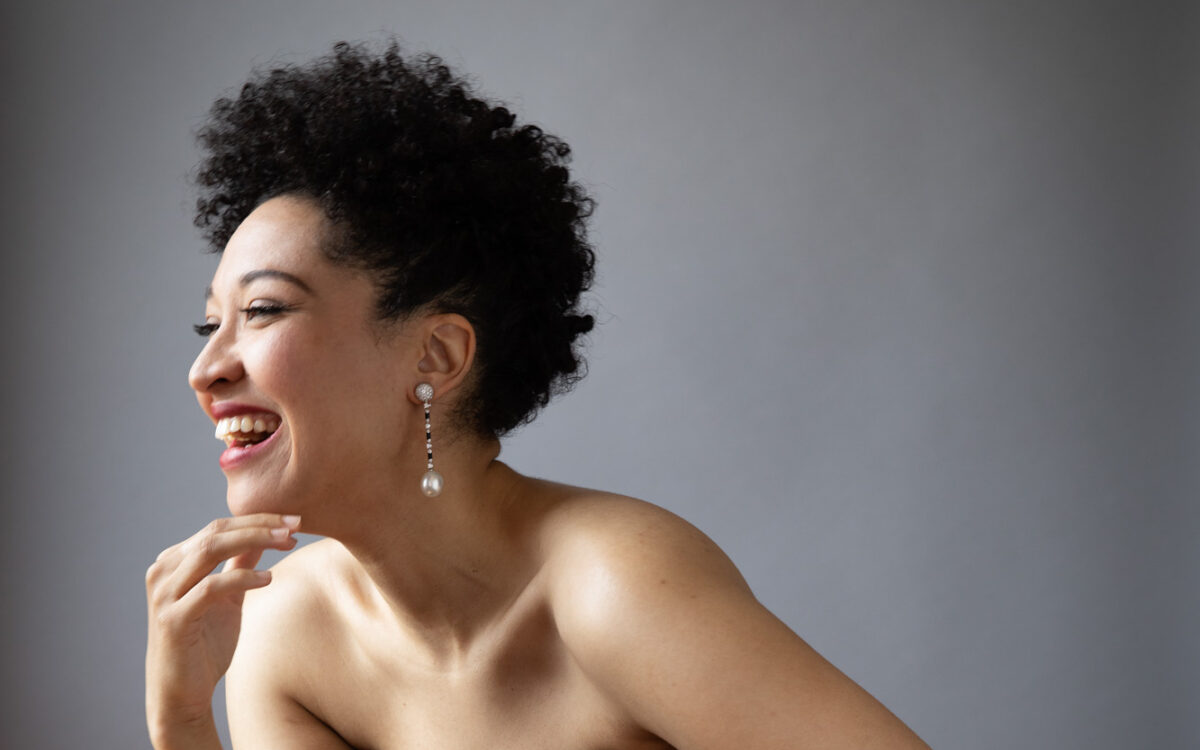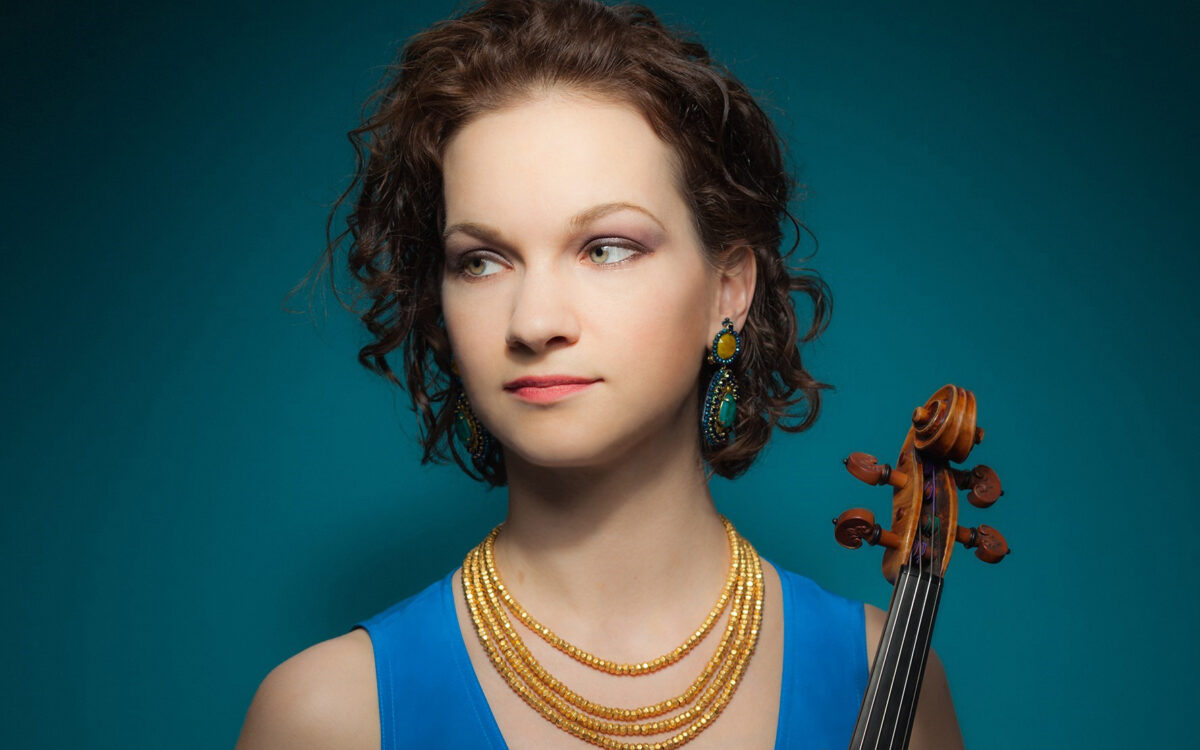Violin Concerto in D, Opus 77
Johannes Brahms was born in Hamburg, Germany, on May 7, 1833, and died in Vienna on April 3, 1897. He wrote the Violin Concerto in the summer and early fall of 1878, but the published score incorporates revisions made after the premiere, which was given by Joseph Joachim, the dedicatee, in Leipzig on January 1, 1879, with the composer conducting the Gewandhaus Orchestra.
In addition to the solo violin, the score of Brahms’s Violin Concerto calls for 2 each of flutes, oboes, clarinets, and bassoons, 4 horns, 2 trumpets, timpani, and strings (first and second violins, violas, cellos, and double basses). The concerto is about 42 minutes long.
Once someone called Johannes Brahms “a man without illusions.” That applied to the composer in several dimensions—personal, creative, and social. As man and artist Brahms was hard-headed, commonsensical, and without sentimentality. He did not, for example, believe that art could save the world, no matter how much the world around him in Vienna needed saving. Music for him was a private matter between composer and listener. However much of his heart and soul went into his work, he was not interested in talking about it. He had a fine sense of his particular gifts, that he was stronger in some respects than others. Really, as a composer he had no weak suits. But his relatively weakest suit had to do with instrumentation. By his own admission, he was fully comfortable only with his own instrument, the piano.
All his life Brahms asked for advice from trusted musical friends. Chief among them were two of the legendary performers of the 19th century—pianist Clara Schumann, the love of old-bachelor Brahms’s life; and Joseph Joachim, the leading violinist of his generation. Joachim, who was also an able composer, served from early on as Brahms’s chief adviser in handling the orchestra.
So when in the summer of 1878 Joachim got a note from Brahms saying “a few violin passages” would be forthcoming, he knew something big might be up. Johannes habitually understated matters. When the passages arrived in the mail Joachim realized, surely with a thrill of joy and apprehension, that his old friend was finally writing a violin concerto. Inevitably, it was going to be written with Joachim in mind. The violinist was being asked to collaborate.
It would not prove an easy assignment. The back-and–forth over the solo part was carried on by mail and in person, Joachim playing over passages and making suggestions, sometimes rewriting sections of the solo part to make them more agreeable under the hand, more violinistic. Brahms was perennially impatient with matters of the kitchen when it came to instrumentation. He wanted a big, grand orchestral sound as in the First Piano Concerto, but he had to deal with the reality that a violin can’t make as much noise as a piano. As it turned out, in the midst of the early rehearsals and performances Brahms was forced to continue paring away at the textures to allow the violin to be heard.
As they worked, what usually happened was that Brahms would give Joachim a passage, the violinist would revise it, Brahms would throw out the revisions and come up with a third version, which might or might not work to Joachim’s satisfaction, and negotiations would begin again. When Joachim seemed to be slacking, Brahms threatened to find a more “severe” critic, then blithely continued to discard suggestions. Both men kept at it with dogged determination, both determined that this was going to be a great concerto. When all was said and done, in the final manuscript some of the violin part is in Joachim’s hand. Brahms also gave his collaborator the honor of writing his own cadenza—the one usually used today (as is the case in the present performances).
Joachim was anxious for the piece to be finished for a gala concert in Leipzig scheduled for New Year’s Day, 1879. Those hopes were threatened by a characteristically ironic letter from Brahms saying “the middle movements are bust—naturally they were the best ones! I’m writing a wretched adagio instead.” (One of the rejected movements, a huge fiery scherzo, ended up in the Second Piano Concerto.)
In the end, the concerto did get its premiere in that New Year’s concert, but it was not a cheerful occasion. Brahms and Joachim were both rattled by the revisions that had continued down to the wire, and by some still unresolved balance problems. The performance was probably shaky, the reception frosty. After the concert Brahms, Joachim, and their friend Edvard Grieg took the most sensible panacea: they headed for a tavern and got drunk. By the time the concerto was published as Opus 77, Brahms had polished it to his usual unforgiving standards. It endures as one of his essential masterpieces and one of the most beloved works in the concerto repertoire.
As much as anything he wrote, the Violin Concerto demonstrates Brahms’s singular mingling of tradition and innovation. In theory his model for a first movement of a concerto is Mozart’s: the orchestra plays the first exposition alone, introducing the basic material, then the soloist enters and begins a second exposition that roughly follows the first, with new material from the soloist. But Brahms’s second exposition is quite altered from the first, and the entry of the soloist changes the equation drastically.
The movement is enormous, longer than the other two put together. It begins quietly, strings and low winds presenting a D major theme that sounds like a distant horn call. At a magical change to C major the oboe sings a lyrical theme over pulsating strings. The first exposition largely unfolds as a calm and lovely expanse. Then a note of tension intrudes, ushering in the soloist with a D minor explosion of boldness and fury. The soloist takes over the music for a moment, like a little cadenza. From there on the second exposition, in contrast to the first, is a dialectic between peace and unrest.
Much of the time the violin plays rippling figures over the orchestra’s melodies, but none of the themes is very sustained until the end of the exposition, when the violin falls into a lyrical theme of melting beauty. The development produces a new tranquillo idea in the solo instrument. As part of the dialectic of tranquil and intense, that new theme transforms into something ferocious. After the cadenza the orchestra enters quietly, but works up to a full-throated finish.
What Brahms jokingly called his “wretched adagio” begins with a hymnlike theme, featuring a serene oboe melody that the violin in fact never gets to play (to the perennial annoyance of soloists). Brahms tends to develop his material constantly; the violin enters not with an echo of the oboe theme but a variation of it. In the middle of the simple ABA form the violin dispenses elegant garlands of notes that continue to the end.
All of Brahms’s concertos end in his Hungarian/Gypsy mode, and this one is the most uproarious of the lot. The tensions of the first movement resolve into gaiety. It is laid out more or less in sonata-rondo form, the rollicking leading theme returning regularly. The B-section recalls one of the furioso themes in the first movement, but without the anger. The finale is largely about delight, all the way to a breathtaking coda.
In this work written for Joseph Joachim—Hungarian-born, a man of tumultuous temperament capable of great tenderness and vindictive fury—the music seems to echo its dedicatee. It certainly echoes his virtuosity. History calls Brahms the great abstractionist in his music, but he never claimed that quality for himself, and now and then he admitted how deeply his music was rooted in his life.
All the same, most of the time Brahms kept people at a distance. He also tried with varying success to keep his person at a distance from history. Around the time he finished the Violin Concerto he grew his famous beard. It changed his appearance so much that friends sometimes didn’t recognize him. Brahms was delighted with the effect. He took to changing his voice and introducing himself as “Kapellmeister Müller from Braunschweig.” So began the bearish-old-patriarch disguise he would wear to the end, but the passionate young man he had been lived on in his music.
Jan Swafford
Jan Swafford is a prizewinning composer and writer whose most recent book, published in December 2020, is Mozart: The Reign of Love. His other acclaimed books include Beethoven: Anguish and Triumph, Johannes Brahms: A Biography, The Vintage Guide to Classical Music, and Language of the Spirit: An Introduction to Classical Music. He is an alumnus of the Tanglewood Music Center, where he studied composition.
The Boston Symphony Orchestra gave the first American performance of the Brahms Violin Concerto on December 7, 1889, with BSO concertmaster Franz Kneisel as soloist and Arthur Nikisch conducting.



